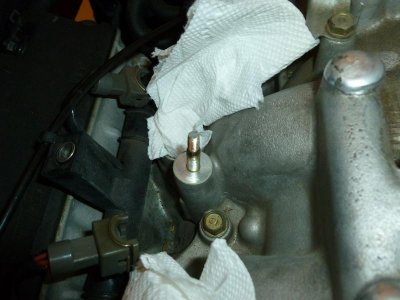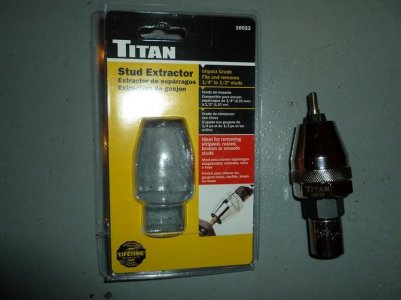Reviving this old thread for the same exact thing happened to me. I was using a tiny torque wrench when reinstalling the rails but it was apparent someone else had mucked with this stud before as well. The remnant of the stud is irregular and I cannot get a nut on the remaining stud to perform the double nut removal. My question is can I use a dremel tool to remove the irregular end while I have some of the fuel line unattached? I will admit that I have the fuel lines covered up with cloth, but am not certain whether using a dremel tool under such circumstances is safe. I'm sure this dilemma has surfaced before. Anyone have thoughts on how to remove the stud? I did try to utilize vise-grips and it would work.
- - - Updated - - -
Alright, as an update, I took a chance and "dremeled" the irregular end off. Fortunately, no fire. Now a nut can spin down onto the stud but something is distorted, for about half way down the nut meets resistance as though the threads are distorted. I can gently force the nut further down, but would I be causing more damage? Thoughts?
- - - Updated - - -
Well after a fair amount of cursing and frustration, I went online to read up some more on how to remove these darn studs. Many stated what angus recommends above and seem to have good luck. I attempted that maneuver and failed. I tried multiple attempts and all were failures. Ultimately, I found a reference to an unusual tool call Titan Stud Extractor. This little $25 gem easily extracted the pesky stud with no drama. It was nicer than other stud removers for it allowed symmetrical delivery of torque to the whole study instead of one side; thus, prevent breakage of the stud.
Honestly, I was freaking out for I feared that I was going to have to replace the intake components just to get the stud out or shamefully have to have the car trailered to a dealer to clean-up my mishap. I wanted to share my experience for undoubtedly someone may sadly succumb to the same misery of having a broken stud.







